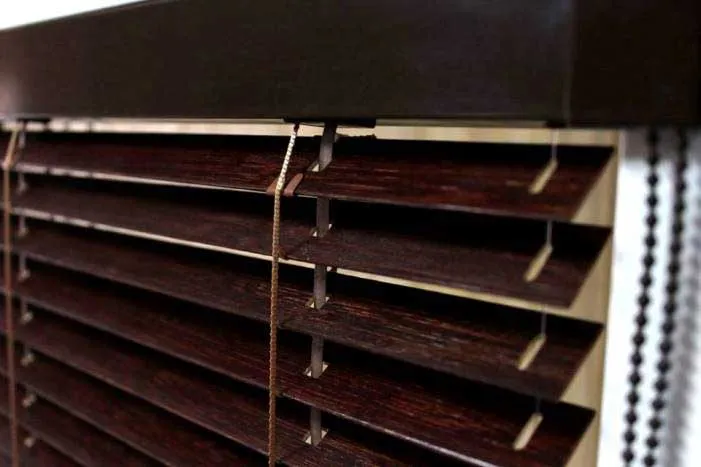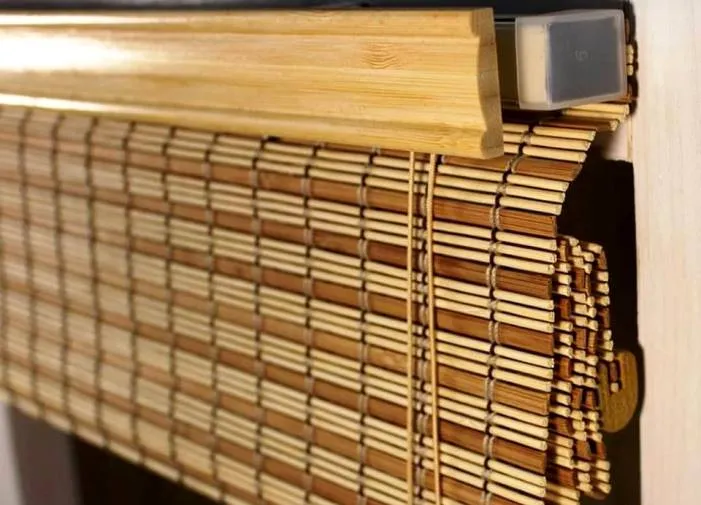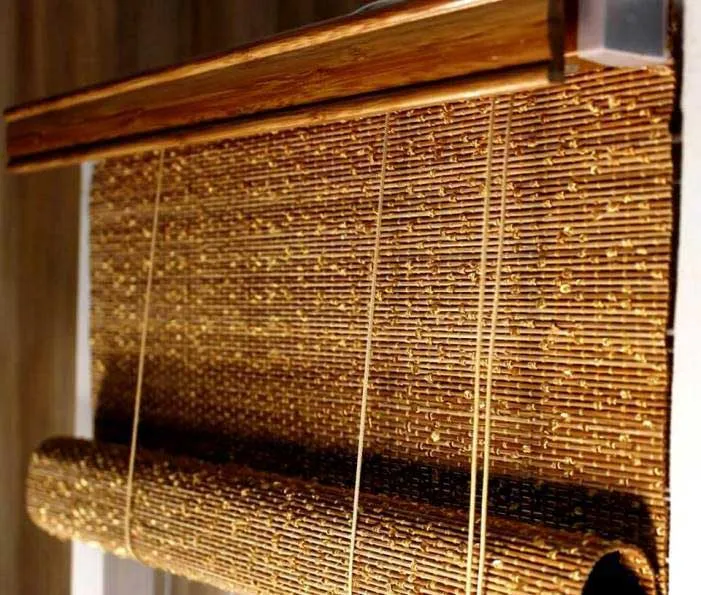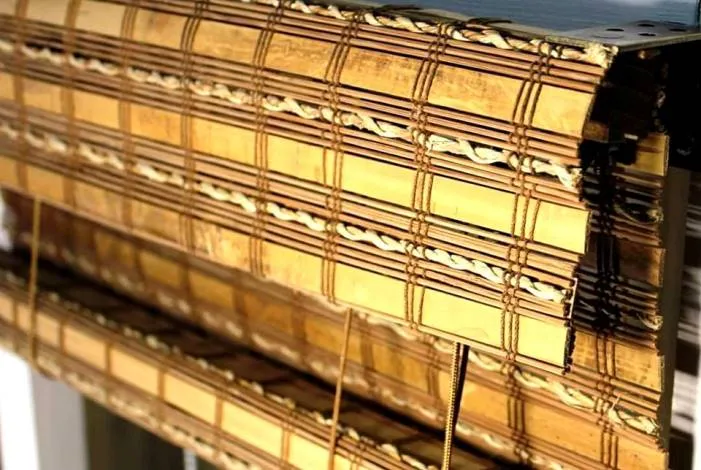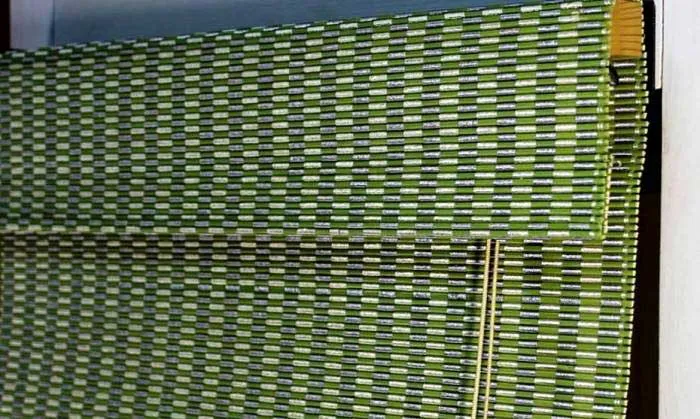In every office there is a question of convenience of work and the creation of the right working environment so that no one is distracted by unnecessary details and sunlight. Also, windows in offices are often covered so as not to distract workers from views from the street. In order to cover the windows and protect from the sun, blinds are often used in the office. They come in two types - horizontal and vertical. Such blinds have fundamental differences from each other, as well as their pros and cons.
Let's consider the advantages of horizontal blinds - this is a good inexpensive system that is used in offices with a small number of windows or sashes. If the office is located in a building, it is enough to install aluminum blinds on the windows to provide complete protection from the sun. Such blinds look quite formal and are not conspicuous, which does not distract people from their work. If necessary, the cornice can always be removed or replaced with another one at a competitive price. Caring for blinds is not difficult; aluminum slats do not rust or accumulate dust because, unlike fabric, painted metal is easy to wipe clean. But the products themselves are quite fragile, so if handled carelessly, the slats easily wrinkle and never regain their shape.
There are many varieties of horizontal blinds; they may differ in slats, cornices, clamps and control options. Let's look at what types of blinds there are and what are their differences.
Controls on horizontal blinds are presented in the classic form of a cord and cane, as well as chain and cord controls.
Classic control - in this version, the blinds are controlled in a standard way; to rotate the slats, a special cane is used, which is attached to the control mechanism and turns the slats to regulate the light flux. Rotating the slats is the main function of blinds control. Also, the entire canvas can be lifted entirely, but this happens quite rarely in cases where it is necessary to clear the light opening for cleaning. In order to raise the slats, a special cord is used.
Chain or mono control - used in the Venus and Magnus systems, such blinds are equipped with a special mechanism that allows you to lift and rotate the slats using a single chain. If you pull the chain, the lamellas first turn, and then move up or down. With this control option, there is no chain on the blinds, which simplifies the control of the blinds.
Wooden blinds use controls similar to classic ones, but with some differences. Since wooden slats are heavier than aluminum ones, they use a reinforced cord and a wooden cane in a color similar to the slats. Wooden canes are used only in blinds with wooden and bamboo slats.
The cornice is the main power structure that holds the entire product, so the cornice may differ depending on the slats and mechanisms that are used in it. Cornices can be divided into three main options.
Classic curtain rod for aluminum horizontal blinds. Suitable for most aluminum blinds, it comes with a standard mechanism, cord and control stick. This cornice can be used with aluminum slats with a width of 25 or 16mm.
Venus cornice - has fundamental differences compared to the classic version, since Venus blinds are mounted between glazing beads. therefore, the cornice in them is narrower with an additional plastic lining. Also on the sides of the cornice there are special plastic ears that protrude beyond the glazing beads and allow you to fix the cornice on the window frame. Plastic overlays for cornices can be of several colors - white, brown and golden oak. The color matches the factory color of the window frame, so the cornice does not differ from the color of the frame and is visually almost invisible.
Since the cornice is located between the glazing beads, the slats are located next to the glass, which saves a lot of space. If windows have a limited opening angle, then Venus blinds are the best solution; they practically do not reduce the opening angle of the sash, which allows them to be installed even in hard-to-reach places. The only limitation for installing such a cornice is the depth of the glazing beads; it must be at least 12mm.
Cornice for wooden blinds - wooden slats have more weight than thin aluminum. Also, wooden slats can be either 25mm or 50mm wide, and with large dimensions the product weighs quite a lot. Therefore, for wooden blinds with 50mm slats, reinforced cornices and mechanisms are used so that the blinds remain functional even under heavy loads in the form of wooden slats. Also, a groover can be additionally installed on the cornices for wooden blinds, which hides the cornice and its control elements. Groover is a decorative overlay made of natural wood that can be made to match the color of the lamellas or differ in color for contrast.
Types of slats for horizontal blinds
Slats are horizontal stripes that together make up the fabric for blinds. Classic slats are made of aluminum and then painted. Often for home and office blinds with white slats are used as a universal solution for any interior, but there are also colored slats and cornices, which allows you to choose brighter options, for example, green or blue, as well as alternating several colors. When alternating, slats of different colors are placed alternately and the effect of multi-colored stripes on the window is created. Aluminum slats can be 25mm or 16mm wide. 16mm are considered rarer, since they are a little more expensive and are ordered less frequently, but due to the narrow slats, their number is greater on the window and such blinds look more interesting compared to classic ones.
In addition to aluminum, blinds can be made from natural Basswood wood and bamboo. Blinds made from natural materials vary significantly in cost, but have unique advantages compared to other options. Only wooden blinds have a noble appearance that attracts the eye; these are quite rare products that can be seen in the offices of lawyers or company directors, as well as in the office of a private home. Also, wooden blinds complement the interior of country houses and cottages well.
You've also probably heard about plastic lamellas; this is an outdated type of material that is practically not used on modern products, because it has been replaced by aluminum. Plastic blinds were popular for a short time before the mass production of aluminum analogues. At the same time, plastic turns yellow over time and when heated can emit an unpleasant odor, so such slats are practically not used in modern sun protection systems.
Fixation for horizontal blinds
Fixation is a special fastening system that holds the entire product on the window frame and does not allow it to dangle. The cornice for blinds always remains fixed, which means the upper part of the product is always held on the window, and the bottom can be either free-hanging or fixed.
In what cases is lower fixation used? The fixation can be installed on all products by the manufacturer, or installed separately if such a need arises. By default, it is recommended to fix products that are installed on opening sashes, or on inclined windows, such as attics and similar options. Let's consider what fixation options are available in different types of blinds?
Bottom fixation - classic bottom fixation, which consists of two clips that are mounted on the window frame and are supplied with two plugs with fastening for the clip.
The plugs are installed on the bottom weight bar and snap into the latches, which holds the blinds at the bottom. Since the cornice is rigidly fixed on top, the system fixes the product around the perimeter and the blinds do not dangle and do not make unnecessary noise during gusts of wind. The clamp system can be installed on any type of blinds, either from the factory or as an addition. The only system that does not involve lower fixation is Venus; due to the installation features, such a system is equipped with a “PVC string” fixation by default.
PVC string - A complete system for fixing blinds. The string can only be installed by the manufacturer and cannot be installed at home. For the “string” system, a special hole is made in each lamella through which the guide line passes. Thanks to this design, the fishing line fixes the product along the entire plane, including the lamellas, and even when installed at an angle, the lamellas do not sag under their own weight.
This string option is provided by default in venus blinds. Their string is slightly different from the classic version, as it has a non-standard fixation at the bottom. Often a metal corner with a drum is used to tension the fishing line, and the Venus system uses special clamps that are hammered into the inside of the beads and hold the strings. This is the only unique system that is fixed in this way, because it is not possible to fix the string otherwise.
Metal string is a reinforced version of the classic string, but instead of PVC fishing line, a metal cable is used here, which does not fray over time and withstands long-term active use of the product. Metal strings are especially relevant for installation in offices or schools, since blinds in such establishments are used more actively and the metal string will significantly extend the service life of the product.
Bottom line
Blinds come in a variety of variations, both the budget aluminum version and the premium segment made of natural wood. The range includes many color options and combinations of slats, which allows you to choose blinds for both a cozy home environment and strict options for an office or study. The only disadvantages of blinds include cleaning the product; due to the many slats and cords, sometimes complete cleaning will require patience and some time. Otherwise, horizontal blinds are one of the best sun protection options for shutters.
Vertical blinds in the office: pros and cons
Vertical blinds are used in rooms with large window openings that need to be covered with a single curtain. For example, at home, large windows can easily be closed with curtains or other types of classic curtains, and if you need to close windows in a school or office, then classic home curtains are not suitable for such interiors; it is in such cases that vertical blinds will be the ideal choice.
Vertical blinds, like horizontal ones, have many differences in the type of opening, slats and assembly options. Let's look at the main options for fabric vertical blinds. The cornice for vertical blinds is universal; when using any types of slats, as well as various control options, the same cornice is used without changes.
Control Type - Unlike roller blinds, which can only be raised and lowered, vertical blinds open in several different ways. Since the cornice is universal, it does not matter which side it will be installed, which means that the blinds can be controlled either on the left or on the right, but the blinds may differ in the options for sliding the slats.
Type 1 - when the blinds are opened, the slats move away from the window and gather together near the control, respectively, if the control is on the left, then the slats will be on the left and vice versa.
Type 2 - opposite the control, the assembled slats move in the opposite direction from the blind control.
Type 3 - to the sides, regardless of which side the product is controlled from, the slats will move away from the center of the cornice to the sides, evenly opening the light opening.
Type 4 - in this version, the assembled lamellas are located in the center of the cornice, that is, they are assembled on both sides and move to the middle. This control option is used when it is necessary to close two windows at once with one cornice, and there is a small part of the wall between the windows, respectively, using one product, two windows are closed and when the slats are assembled in the center, they cover the wall between the windows.
Type 8 - is similar to type 3, but consists of two cornices that are installed end to end. The Type 8 control has 2 controls on both sides of the product, and each cornice is controlled separately.
This control is convenient to use on one large window to reduce the load on the cornice mechanisms, as well as for ease of transportation, because for an opening of 4 m it is enough to deliver 2 cornices of 2 meters instead of one of 4 m.
Now that we understand the options for controlling blinds, let's look at the types of slats. Most of the slats for vertical blinds are made of fabric; it is 100% polyester with dust-repellent impregnation. Our website also presents functional fabrics, for example, with 100% blackout, but these are extremely rare options for using vertical blinds, so there are not many such slats and they only come with a width of 89mm.
The assembly of blinds is often made from one type of fabric to achieve laconicism and a business style; this is due to the fact that offices and schools require plain, simple blinds that will not distract attention from work and study. But there are other options for assembling vertical blinds, for example, alternating and multi-textured products.
Alternation is the assembly of blinds with alternation of different types of fabric, or fabrics of different colors. In this option, it is not necessary to alternate lamellas. It can also be a build that includes more than one fabric option. An example of such assemblies is alternating dark slats with light ones, or placing dark slats at the edges of the blinds and light slats in the center. this creates the effect of finished curtains even when closed.
Multi-texture is an assembly of curtains with slats of different lengths or with slats made of different materials. For example, multi-textured blinds can be arches or triangular structures, in this option the outer slats are made longer, and the middle ones are much shorter, this creates an arch that allows you to close both arched windows and doorways. Also, multi-textured blinds can consist of different fabrics, which allows you to create unusual patterns on the blinds.
Methods for installing vertical blinds
Vertical blinds can be mounted in several ways, namely - on the opening, in the opening and on the ceiling.
Installation on an opening - special L-shaped brackets are installed on the wall to hold the cornice. When installed on an opening, the curtain is made “with a margin” of 10 cm in width and height in order to completely block the light opening without side gaps.
Installation in an opening - when installing curtains inside an opening, it is necessary to measure the opening and reduce it by 1 cm by width and height so that the blinds can easily fit inside the window opening. It is also worth considering the angle of the slopes because they can reduce the width of the opening and if the blinds need to be recessed inside the opening, they may not fit.
Installation on the ceiling is one of the simplest and most beautiful installation options; for installation in the ceiling, it is enough to measure the overall width and height of the product, after which there should be no difficulties with installation. When installing in the ceiling, it is necessary to take into account the material from which the ceilings in the room are made, for example, Armstrong and gypsum ceilings may not support the weight of large blinds, so if the ceilings do not have reinforcements for mounting blinds, it is better to opt for installation on the wall using brackets.
Bottom line
Vertical blinds are one of the best solutions for sun protection in schools, kindergartens and office premises. They are easy to repair with your own hands, and they also have a fairly strict appearance so as not to distract employees from work and students from studying. When repairing blinds, it is easy to replace individual parts of the structure without the need to replace the entire product, which has a positive effect on the service life of the blinds.
